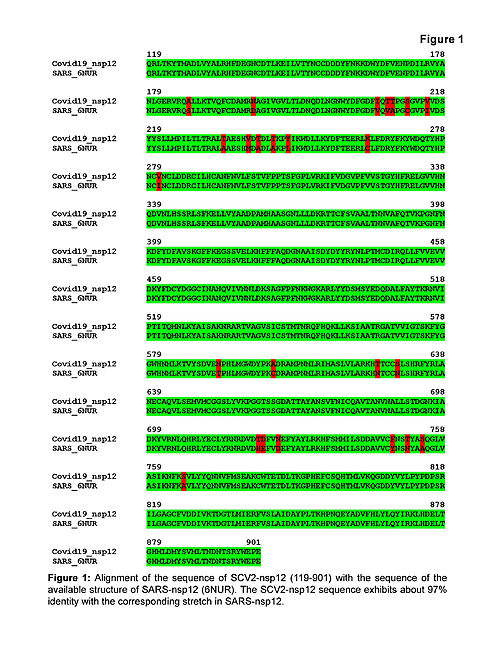Sandbox Reserved 508
From Proteopedia
| Line 8: | Line 8: | ||
== Abstract == | == Abstract == | ||
Heart diseases are the leading cause of death for Americans today. Mitochondria play a crucial role in recovery following ischemia (blood flow restriction) and reperfusion (blood flow return) injury, when a surge of reactive oxygen species (radicals) originating from the mitochondrial electron transport chain causes damage to proteins, lipids and DNA. Uncoupling protein 2 (UCP2), an inner mitochondrial membrane transport protein, is speculated to participate in this protection. The presumed function of UCP2 is carrying protons (H+) into the mitochondrial matrix along a concentration gradient generated by the electron transport chain. Normally, this proton (H+) gradient is used by ATP synthase to phosphorylate ADP to ATP. Under certain conditions, protons (H+) may preferentially be transported through UCP2, creating a detour past ATP synthase (“uncoupling”). Such uncoupling reduces damaging reactive oxygen species whose presence may actually activate UCP2 by residue modification. There are two proposed mechanisms for the transport of protons (H+) into the matrix. One is the direct transport of protons (H+) through UCP2. Alternatively, a fatty acid anion is transported out of the matrix through UCP2, while the protonated fatty acid permeates through the membrane into the matrix. UCP2 must be tightly regulated so it is only active when required, enabling the mitochondria to produce ATP. Understanding transport mechanism and regulation of UCP2 could lead to effective prevention of tissue injury due to heart attack. The Brookfield Central High School SMART Team created a physical model of UCP2 using 3-D modeling printing technology in order to better understand the structure-function relationship of UCP2. | Heart diseases are the leading cause of death for Americans today. Mitochondria play a crucial role in recovery following ischemia (blood flow restriction) and reperfusion (blood flow return) injury, when a surge of reactive oxygen species (radicals) originating from the mitochondrial electron transport chain causes damage to proteins, lipids and DNA. Uncoupling protein 2 (UCP2), an inner mitochondrial membrane transport protein, is speculated to participate in this protection. The presumed function of UCP2 is carrying protons (H+) into the mitochondrial matrix along a concentration gradient generated by the electron transport chain. Normally, this proton (H+) gradient is used by ATP synthase to phosphorylate ADP to ATP. Under certain conditions, protons (H+) may preferentially be transported through UCP2, creating a detour past ATP synthase (“uncoupling”). Such uncoupling reduces damaging reactive oxygen species whose presence may actually activate UCP2 by residue modification. There are two proposed mechanisms for the transport of protons (H+) into the matrix. One is the direct transport of protons (H+) through UCP2. Alternatively, a fatty acid anion is transported out of the matrix through UCP2, while the protonated fatty acid permeates through the membrane into the matrix. UCP2 must be tightly regulated so it is only active when required, enabling the mitochondria to produce ATP. Understanding transport mechanism and regulation of UCP2 could lead to effective prevention of tissue injury due to heart attack. The Brookfield Central High School SMART Team created a physical model of UCP2 using 3-D modeling printing technology in order to better understand the structure-function relationship of UCP2. | ||
| + | |||
| + | [[Image:Figure_1.jpg|left|500px]] | ||
Revision as of 21:30, 29 May 2012
Uncoupling Protein 2
Introduction
Ischemic Heart Disease, the underlying cause of myocardial infarctions (heart attacks), is the leading cause of death in the world. Annually 785,000 American alone experience their first heart attack and 470,000 have a second or third. Cardiomyocytes (contracting heart cells) need energy to function optimally. Mitochondria in the cardiomyocytes provide that energy in the form of ATP through the metabolic process of oxidative phosphorylation, specifically the electron transport chain coupled to the enzyme ATP synthase. However, these mitochondria are vulnerable to injury during recovery after heart attack when the cardiomyocytes again receive blood flow (reperfusion) due to the over-production of reactive oxygen species (ROS or oxygen radicals). An excess of oxygen radicals can be very damaging due to their high chemical reactivity, specifically their ability to break chemical bonds in DNA, RNA, and proteins within the mitochondria and in the cell cytoplasm.
Abstract
Heart diseases are the leading cause of death for Americans today. Mitochondria play a crucial role in recovery following ischemia (blood flow restriction) and reperfusion (blood flow return) injury, when a surge of reactive oxygen species (radicals) originating from the mitochondrial electron transport chain causes damage to proteins, lipids and DNA. Uncoupling protein 2 (UCP2), an inner mitochondrial membrane transport protein, is speculated to participate in this protection. The presumed function of UCP2 is carrying protons (H+) into the mitochondrial matrix along a concentration gradient generated by the electron transport chain. Normally, this proton (H+) gradient is used by ATP synthase to phosphorylate ADP to ATP. Under certain conditions, protons (H+) may preferentially be transported through UCP2, creating a detour past ATP synthase (“uncoupling”). Such uncoupling reduces damaging reactive oxygen species whose presence may actually activate UCP2 by residue modification. There are two proposed mechanisms for the transport of protons (H+) into the matrix. One is the direct transport of protons (H+) through UCP2. Alternatively, a fatty acid anion is transported out of the matrix through UCP2, while the protonated fatty acid permeates through the membrane into the matrix. UCP2 must be tightly regulated so it is only active when required, enabling the mitochondria to produce ATP. Understanding transport mechanism and regulation of UCP2 could lead to effective prevention of tissue injury due to heart attack. The Brookfield Central High School SMART Team created a physical model of UCP2 using 3-D modeling printing technology in order to better understand the structure-function relationship of UCP2.

